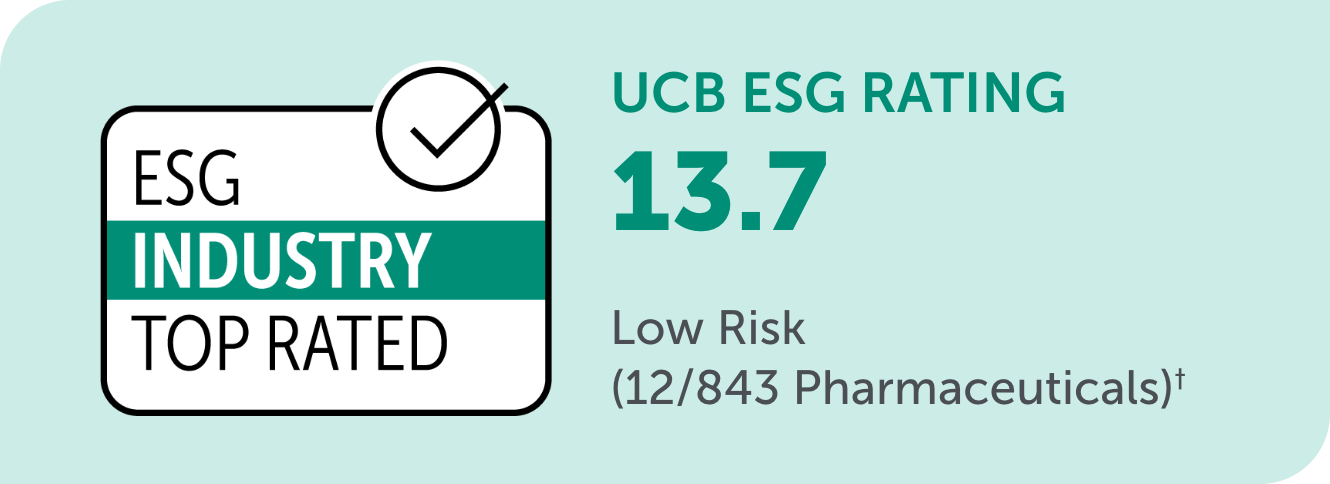UCB is committed to caring for our planet
Our clear global targets* for becoming carbon neutral by 2045 and reducing our environmental impact:
Reduce CO2e emissions and become carbon neutral for the operations we control directly.
Conserve water by reducing water withdrawal by 15%.
Reduce waste production by 18%.

UCB has been awarded a Sustainalytics ESG Industry Top-Rated Badge for environmental, social, and governance commitment in our operations. This award recognises companies that strongly outperform‡ in their respective industries from the Sustainalytics comprehensive ratings universe.
*Reductions are in absolute terms compared to 2019 baseline. †Source: https://www.sustainalytics.com/esg-rating/ucb-sa/1008752737. ‡The 6.7% of companies with the lowest ESG risk score within the defined peer group, except companies with a high or severe risk assessment or category 4 or 5 events. These companies strongly outperform other companies in the peer group.
How are we working towards these targets?
| Carbon capture and storage: UCB supports two biodiversity projects through a collaboration with WeForest and CO2logic in Northern Ethiopia and Democratic Republic of Congo to restore and reforest habitats. | |
| Lower-carbon distribution: We distribute products by ocean freight via UCB’s ‘Air to Ocean’ program. Through this program, we aim to reduce CO2 levels by 627 tonnes by 2026. | |
| Responsible sourcing: We have a responsible sourcing program which aims to have 60% of the emissions created by our suppliers covered by Sciences Based Targets initiative (SBTi)‑like targets. To date, 72% of emissions by core strategic partners are SBTi-aligned. | |
| Electric vehicle policy: We are transitioning our entire company fleet to electric vehicles through the deployment of our plug-in hybrid electric vehicles (PHEVs) policy. This will help reduce carbon emissions by 75 tonnes per year by the end of 2026. |
UCB Australia’s Health of the Planet Committee

Our UCB Australia Health of the Planet Committee is comprised of passionate employees dedicated to leading a strategic and structured approach to help support the health of our planet. The Committee aims to bring attention to this important cause by implementing initiatives and educational activities to help meet set targets.
In 2024, UCB Australia participated in state-based tree planting activities. Through initiatives like this, we work with organisations, including the Koala Clancy Foundation (VIC), The Wetlands Centre (WA) and the Rotary Club of Environment and Habitat (NSW), to help revegetate and restore animal habitats across Australia.


“As sponsor of the Health of Planet Committee, I help ensure we follow through on our strong environmental sustainability commitments. A few highlights include deploying our electric vehicle policy, transitioning our international freight with the ‘Air to Ocean’ program, and delivering an employee volunteering and education program.”
Craig Braithwaite
Head of I2I Patient Impact Intercontinental East
AU-OT-2400022. May 2025.